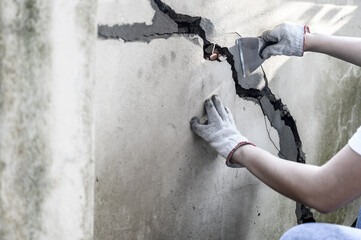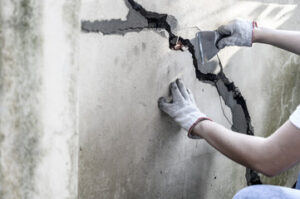Hardscape services include pavers, walkways, patios, retaining walls, and water features. These are non-living elements that can transform a landscape from drab to fab.
Contractors can boost their business by offering hardscape services. They can also use marketing tactics to promote these services. This includes providing before and after photos of projects. Visit https://stonecreteartisans.com/ to learn more.
Hardscaping is the process of incorporating structure into outdoor spaces to create an inviting area for relaxation, entertainment and aesthetic appeal. It can be used to create walkways, patios, retaining walls and more. In addition to enhancing the beauty of a home, hardscaping also offers functional benefits such as reducing soil erosion on sloped properties or providing visual screening from neighbors.
One of the first steps in any hardscaping project is site preparation. This can include clearing away brush and other debris, leveling the ground and grading to promote proper drainage. It is important to have a clear idea of what you want your hardscape construction project to achieve, as this will help determine the size and type of materials needed.
Once the site is ready, it’s time to begin installation. The process may take a few days depending on the design and layout. The crew will follow the plan meticulously, ensuring proper spacing and alignment for a seamless finished product. If a retaining wall is involved, crew members will pay close attention to structural integrity and any necessary reinforcement.
Another important aspect of hardscaping is edging, which is used to create defined lines between areas of the landscape and prevent grass, weeds and other elements from invading hardscape features. Edging can be made from several types of material, including wood, steel and plastic. It is important to choose a material that will work well with the surrounding landscape and your home.
Once the hardscaping construction is complete, it’s important to maintain the area. Regular cleaning and sweeping can help keep dirt from building up and damaging the surface, while periodic staining or sealing will ensure that your investment is protected from the weather and other outdoor elements. It is also a good idea to follow maintenance guidelines specific to the materials used in your hardscaping construction, such as sealing pavers to protect against stains or re-staining wood features after they’ve been stained. These simple steps will help prolong the life and beauty of your new landscaping features.
Design
The design of hardscape elements can include paved areas, walkways, patios, grill surrounds, fire pits, outdoor kitchens and retaining walls. It’s important that these pieces blend seamlessly with the overall landscape. This is why the services of a hardscape designer are so essential. They’ll make sure the colors, textures and materials are in alignment with the rest of the property.
If you’re looking to add a little bit of extra flair to your backyard, consider including curves and rounded edges in your hardscape design. This will give it a more natural look that’s not too harsh on the eyes. It’s also a great idea to incorporate as many different textures into your design as possible. This will help create a more visually appealing space that’s also comfortable to walk on and lounge around in.
Another important consideration when designing a hardscape is how it will impact the drainage on your yard. If you don’t have the proper drainage in your yard, it can lead to flooding, mudflows, wet soil that causes premature wear on the foundation of your home, basement flooding, sink holes and accelerated erosion. To prevent these issues, you’ll want to have your hardscape design incorporate features like swales, ditches and drainage channels that are connected to stormwater pipes or culverts to carry off excess water from impervious surfaces.
Having a properly designed and installed hardscape will provide a host of benefits for homeowners. For one, it will reduce their yard work by eliminating the need for mowing and watering plants and grass. In addition, it will increase the value of their property by adding more usable outdoor living space. So, if you’re thinking about putting your house on the market in the near future, hardscaping is a great way to get more bang for your buck!
Installation
Hardscaping is the term for non-plant landscaping elements like patios, walkways, retaining walls, fences, fire pits and landscape lighting. Typically, these structures are built using concrete, stone, wood and brick, and contrast with softscape, or the plant-based elements of a garden or yard. Hardscape services often involve designing and installing these non-plant elements to provide structure and definition to outdoor spaces.
Adding patios, walkways, retaining walls and other hardscape features to your outdoor space is a great way to expand your living area and make it more usable for entertaining and relaxing. It also helps with erosion control, and it increases the overall aesthetic of your property.
A well-designed and installed hardscape feature can add value to your home, while a poorly designed one can decrease it. It’s important to hire a professional hardscape company to ensure the design and installation is done correctly. The team at The Grounds Guys are both certified landscape architects and licensed hardscape contractors, so you can rest assured that your project will be handled professionally and according to the local building codes.
Functional hardscape is largely invisible in urban areas, but it includes the things that manage flow and traffic: tree grates, trench drains, rainwater catchments, water-clearing stormwater grates, stormwater drains, detectable warning plates, bollards, lids and manhole covers. These pieces of hardware, sometimes called “urban furniture”, form an unmoving frame that supports the life and movement of a city.
Adding hardscape features to your backyard is a great way to extend your living space, create a beautiful outdoor dining area for your family and friends, and help with erosion control. These hardscape features can increase the overall visual appeal of your property, and they can also be a great place for kids and pets to play. However, these features require regular maintenance to avoid damage from weather and wear and tear. It’s also important to clean your hardscape features regularly and apply a sealant to help them resist moisture and dirt. Taking these preventative measures will ensure your hardscape features last for years to come.
Maintenance
Just like a car or an appliance, hardscape construction requires routine maintenance to keep it looking and functioning its best. This helps to avoid costly repairs and prolong the life of your outdoor features.
Unlike landscaping, which adds softness and life to your yard, hardscapes are made of materials that create structure and curb appeal. Typically, they include patios, walkways, water features and fire pits. These structures make your yard more functional and attractive and are an ideal place to relax, play, and entertain friends and family.
Hardscape services are available from many local companies, including those that specialize in pool installation. But be careful when choosing a company to perform this work. One hardscape company was recently hired to pour the concrete for a new pool at a residence. The project began with a good start, but difficulties quickly developed as the contractor failed to follow through on promises and did not meet agreed upon specifications.
For example, it took over two months to set the forms for the concrete, and they missed a crucial deadline for pouring the structure. During this time, the homeowner and pool contractor were unable to communicate effectively. Difficulties were also raised over the quality of the concrete — with some areas appearing to have as little as three feet of concrete. The contractor eventually pulled out of the contract and a “tear out” concrete contractor was brought in to complete the pour.
While these types of problems are rare, it is important to choose a qualified contractor to avoid similar issues with your hardscape project. Look for a company with an excellent track record of customer service and satisfied clients. In addition, be sure to check the company’s license status.
Taking the time to maintain your hardscape can help it last longer and provide greater enjoyment for years to come. Cleaning up unwanted spills, moss and mildew growth, and removing weeds promptly will help to extend the lifespan of your outdoor features. Proper care and regular cleaning will also prevent deterioration caused by the weather and prolonged sun exposure.





